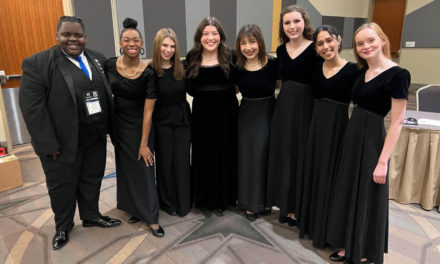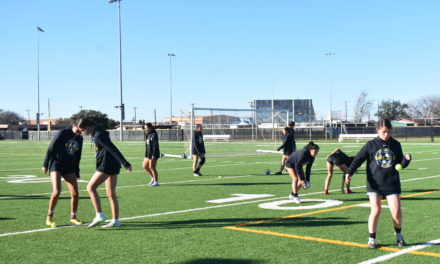By Marin Murray.
Almost 50 years ago, on June 23, 1972, Title IX of the Education Amendment of 1972 was signed into law by President Richard Nixon. The law guarantees equalities and protections for all women in the educational world. Thirty years later, in 2002, it was renamed the Patsy Takemoto Mink Equal Opportunity in Education Act, following the death of its coauthor and former U.S. representative Patsy Takemoto Mink. And while this was a significant step 50 years ago, there is still so much progress to be made for American women in every area of life.
The celebration of women breaking barriers is evident everywhere in today’s society; on social media platforms, in newspapers, magazines, and so much more. There are entire podcasts and newsletters dedicated to covering what women are doing around the world, because it is about time women received the praise they deserve. And while this spotlight on women is just now becoming mainstream, it’s important to remember the importance behind it all.
The law, which states that, “No person in the United States shall, on the basis of sex, be excluded from participation in, be denied the benefits of, or be subjected to discrimination under any education program or activity receiving federal financial assistance” applies to schools, universities, libraries, museums, and any other educational organization that receives financial assistance from the government. In addition to that, it covers everything from athletics and admission to housing and sexual harassment. This has provided countless new opportunities for women, along with many more protections and rights, which should have been preserved in the first place. With that being said, it remains quite obvious that there is still more to be done for all women, in all walks of life, for there to be true equality not just in our country, but worldwide as well.
Since the creation of this act, more women have earned and received more influential positions in the sports world, the political world, and so many more aspects of life. In 2020, Kamala Harris was the first female vice president elected to office in the United States, which is the highest office any woman in the country has ever held. Additionally, eight nations worldwide had a woman elected or sworn in as either president or prime minister for at least part of the year, with Sweden and Tanzania among them. The allowance of equal opportunities as a result of Title IX have opened numerous doors and women aren’t tiptoeing through – they’re swinging it open and marching right through. For example, women are being hired in the MLB, Major League Baseball, and NFL, National Football League, now, more than ever before, and hold positions that used to only belong to men as managers, owners, and coaches.
In terms of equality of pay, there have been great improvements as well, but once again those improvements aren’t sufficient. Title IX and other acts, such as the Equal Pay Act, have helped to lessen the wage gap between men and women, but the disparity still remains quite substantial. According to Payscale’s 2022 State of the Gender Pay Gap Report released on March 15, women earn 82 cents for every one dollar men earn, a statistic unchanged from 2021. Despite that, major strides are being made in terms of pay. For example, on May 18, the US men’s and women’s national soccer teams struck a deal that closed the staggering pay gap between the two groups. This momentous agreement is the first of its kind, of any sport in any nation, setting the precedent for all. The deal will allow for the teams to pool World Cup bonuses and split them equally, evening out the unfair playing field set by FIFA, the global governing body of the sport.
According to a “Girls in Sports” study done by Gatorade in 2017, girls drop out of sports at 1.5 times the rate boys do by the time they’re 14. By the age 17, more than half of all teenage girls will quit playing sports altogether. The leading cause appears to be that girls don’t see a future for themselves in the world of athletics. One reason for this could be the fact that women’s sports account for less than 10 percent of sports available to watch on television. How can girls see a future for themselves in a particular sport if they have no one to look up to? Even though colleges and universities are required to have the same number of male and female sports by Title IX, the disparity between focus and attention on those sports is extremely large. Until this year, the women’s and men’s March Madness tournaments illustrated how evident that is. The women’s teams received lower quality facilities and fewer rewards than the men for the same quality of college basketball. It wasn’t until the NCAA was called out for the inequalities, by athletes, coaches, and celebrities alike, that something was done to fix it for future tournaments. There is no possible way for girls to see a future for themselves in a sport if they know that they won’t matter as much as a guy with the same amount of skill and potential.
In a similar way, women’s professional sports receive less recognition than men’s. Women’s professional sports have been in existence for far less time than that of men’s professional sports. This year, the NWSL, National Women’s Soccer League, and the WNBA, Women’s National Basketball Association, have just begun their 10th and 26th seasons, respectively. However, the NFL has been in existence since 1920, with its 98th season being played this fall. And yes, while professional sports are a business driven by economic factors, there is no reason these dates are as skewed as they are. And while more men are beginning to aid women in their fight for equality, they should have been doing it from the beginning. Prominent male figures are commended for their support of female figures, but these acts of solidarity should be expected, not earned. Women should have the backing of their male counterparts, and that backing should have been there from the start. Even while the act was being created and put into place, there were men who still tried to lessen it by taking away some of the most important parts or by trying to get rid of it altogether.
All in all, we have come a long way from where we started 50 years ago. Women are finally being placed in the spotlight like they deserve. Soccer players like Megan Rapinoe and Alex Morgan commanded the stage at the World Cup in 2019 when the United States won the global tournament. Simone Biles first captured people’s attention in both the 2016 and 2020 Olympics with her gravity-defying acrobatics but was most notably applauded for her approach to mental health. But simply being applauded isn’t enough. Recognition isn’t enough. Until these things are followed by actions that reinforce them, they will just continue to be empty, meaningless words. And that’s not what we deserve. Empty promises aren’t what our predecessors fought for, they fought for action and change. Until something is done to truly allow equality to occur, that fight will never be over.










